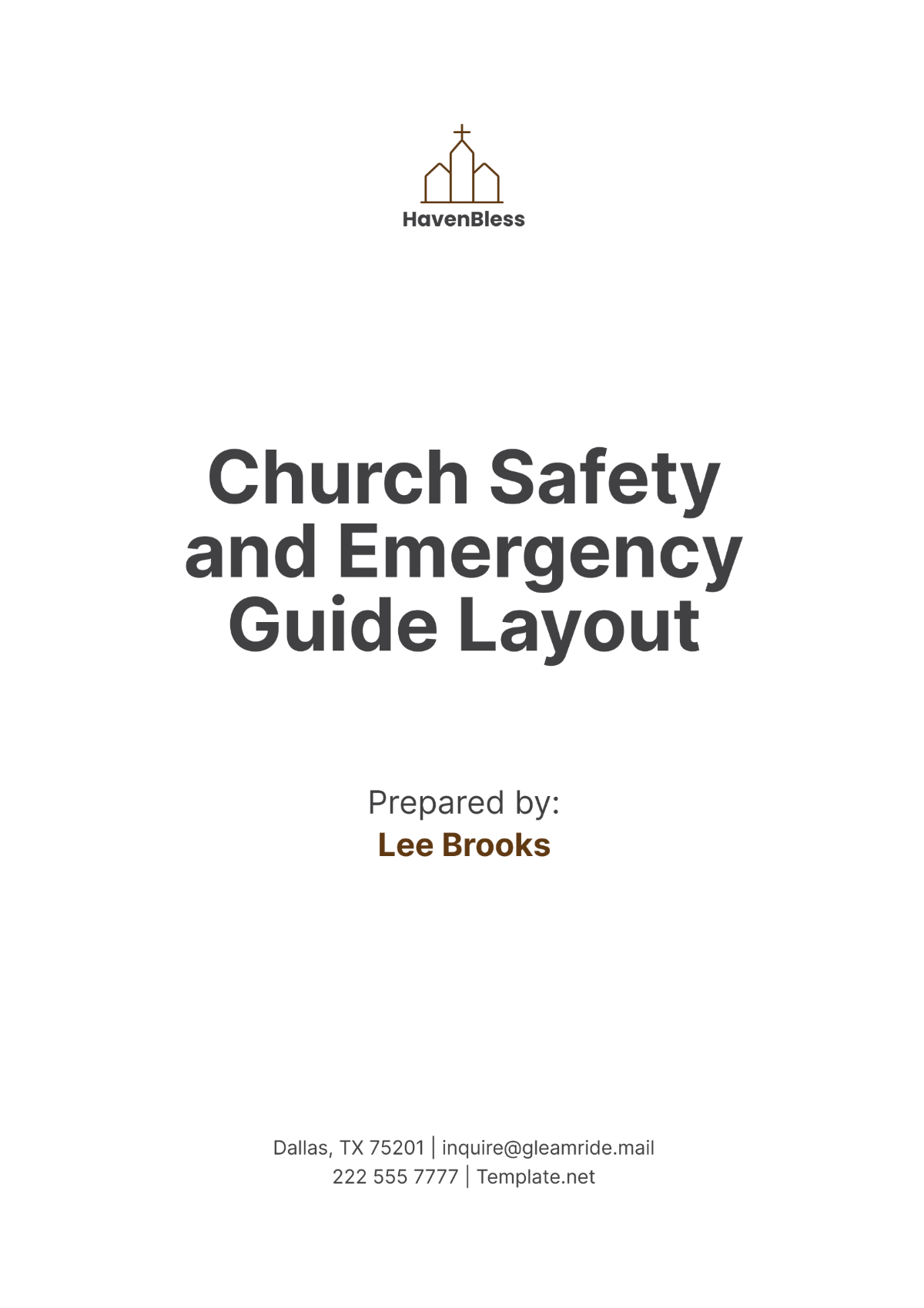Free Church Safety and Emergency Guide Layout

- 100% Customizable, free editor
- Access 1 Million+ Templates, photo’s & graphics
- Download or share as a template
- Click and replace photos, graphics, text, backgrounds
- Resize, crop, AI write & more
- Access advanced editor
Ensure your congregation's safety with the Church Safety and Emergency Guide Layout Template from Template.net. This fully customizable and editable template is designed to outline safety protocols and emergency procedures. Easily personalize it using our Ai Editor Tool to create a comprehensive and clear guide that prioritizes the well-being of your church members.
Church Safety and Emergency Guide Layout
I. Introduction
Purpose: (The guide’s objective to ensure safety and provide emergency procedures.)
Scope: (Types of emergencies covered (e.g., fire, severe weather, medical emergencies).)
Overview of Emergency Planning: (Importance of having a plan and preparedness.)
II. Emergency Contacts
Local Emergency Services: (Police, fire department, medical emergency, poison control.)
Church Emergency Contacts: (Key staff members and their contact information.)
Key Staff Contacts: (Specific roles and emergency contacts.)
III. Emergency Procedures
Fire Evacuation Plan: (Steps to take during a fire, evacuation routes, assembly points.)
Severe Weather Procedures: (Protocols for tornadoes, hurricanes, floods.)
Medical Emergencies: (First aid procedures, medical emergency contacts.)
Active Shooter/Intruder Protocol: (Response actions, lockdown procedures.)
Chemical Spill Response: (Steps for containment and cleanup, reporting procedures.)
Power Outage Procedures: (Safety measures, backup power systems, communication plans.)
IV. Evacuation Plan
Building Layout and Exits: (Maps showing exits, safe routes, and assembly points.)
Evacuation Routes: (Clearly marked routes to safety.)
Assembly Points: (Designated areas outside the building for congregating.)
Special Needs Assistance: (Procedures for assisting individuals with disabilities.)
V. First Aid and Medical Response
First Aid Kit Locations: (Where to find first aid kits within the church.)
Basic First Aid Instructions: (How to handle common injuries and medical emergencies.)
Medical Emergency Contacts: (Contact information for local medical services.)
VI. Fire Safety
Fire Extinguisher Locations: (Locations and types of fire extinguishers.)
Fire Alarm System: (Information on the fire alarm system and its operation.)
Fire Drills and Training: (Schedule and procedures for fire drills and staff training.)
VII. Severe Weather
Tornado Procedures: (Actions to take during a tornado.)
Hurricane Procedures: (Actions to take during a hurricane.)
Flood Procedures: (Actions to take during a flood.)
VIII. Active Shooter/Intruder
Response Protocol: (Steps to take during an active shooter or intruder situation.)
Lockdown Procedures: (How to secure the building and manage the lockdown.)
Communication Plan: (Methods for communicating during and after an incident.)
IX. Chemical Spill Response
Hazard Identification: (Recognizing and labeling hazardous materials.)
Spill Containment and Cleanup: (Procedures for managing spills.)
Reporting Procedures: (Steps for reporting spills to authorities.)
X. Power Outage
Safety Precautions: (How to stay safe during a power outage.)
Backup Power Systems: (Information on backup generators and their use.)
Communication Plan: (How to keep everyone informed during an outage.)
XI. Training and Drills
Regular Training Schedule: (Frequency and schedule of safety training.)
Drill Procedures: (How to conduct and evaluate drills.)
Documentation of Drills: (Record-keeping and review of drill performance.)
XII. Review and Updates
Review Schedule: (How often the guide should be reviewed.)
Updating Procedures: (How to update the guide as needed.)
Feedback Mechanism: (How to provide feedback and suggestions.)
XIII. Appendices
Emergency Contact List: (Comprehensive list of emergency contacts.)
Building Layouts: (Detailed maps and layouts of the church.)
First Aid and CPR Resources: (Training resources and guides.)
Emergency Supplies Inventory: (List of emergency supplies available at the church.)